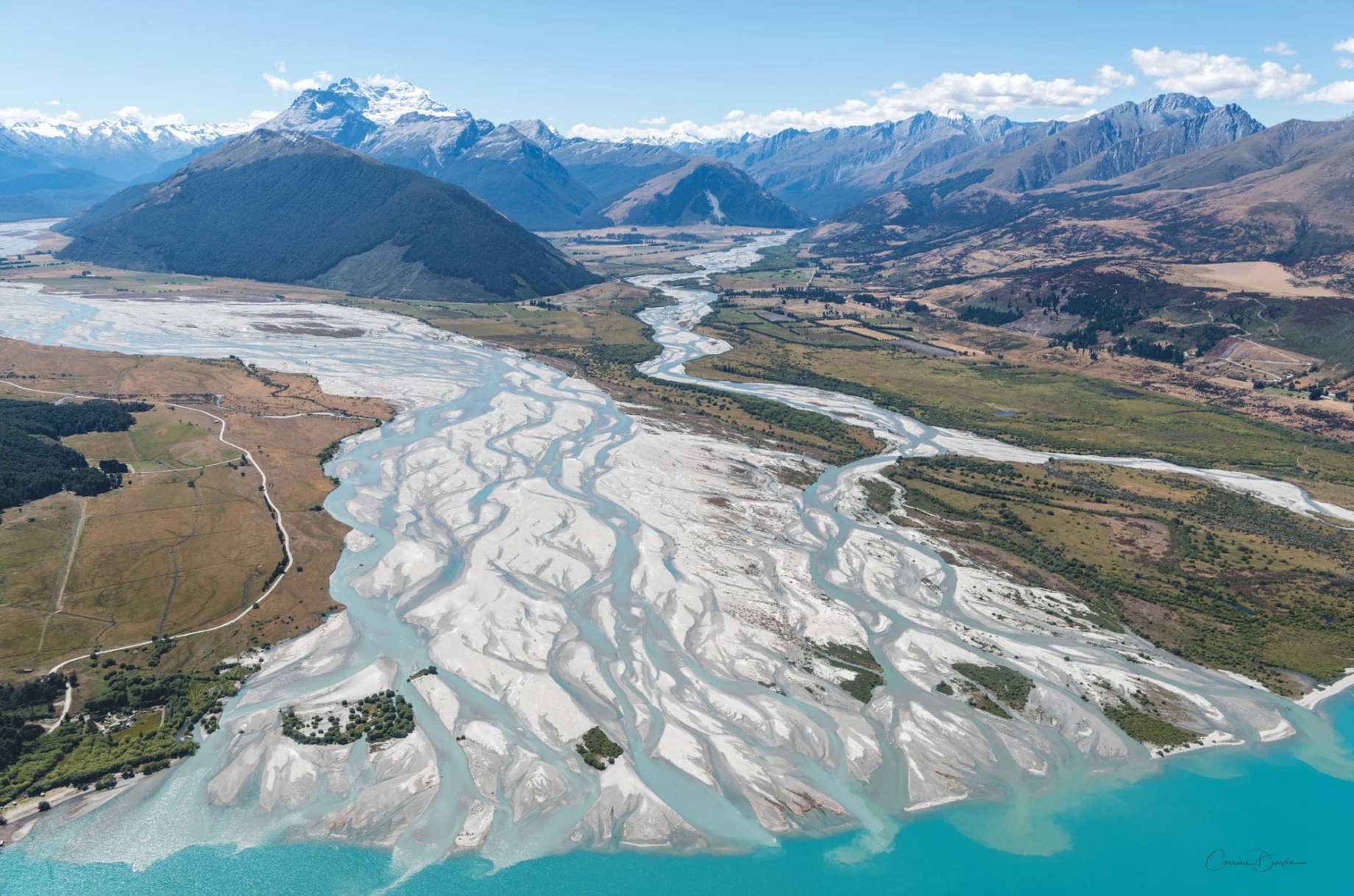
Image Credit : pixabay (free license)
The photo above showing a braided stream system (the Dart River) near Glenorchy, South Island, New Zealand, was captured from a helicopter. In the distance, flanked by the Southern Alps, is glacier-gouged Lake Wakatipu, the 3rd biggest lake in New Zealand -- 52 miles (83 km) long. A characteristic of braided drainage systems is that they occur in streams or rivers having low slopes and often high sediment loads, such as streams approaching the inflow of large lakes or flowing from the base of a glacier. Nearly all braided streams have banks that easily erode, thus forming wide, shallow channels.
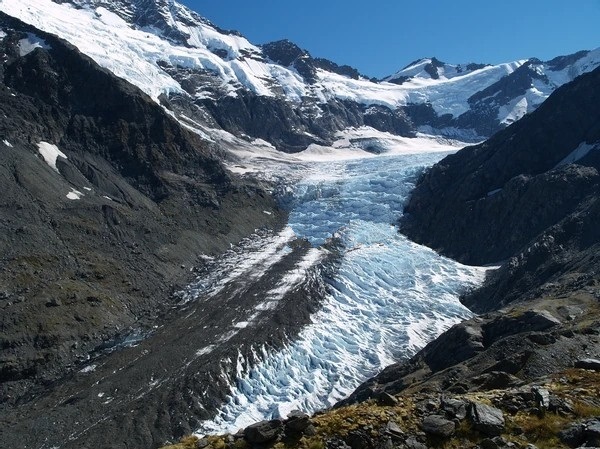
Image Credit : freepik (free license)
Because rain and clouds are such prominent features of the South Island's west coast, rarely are views here so clear. This area was featured in the "Lord of the Rings" movies as Isengard.
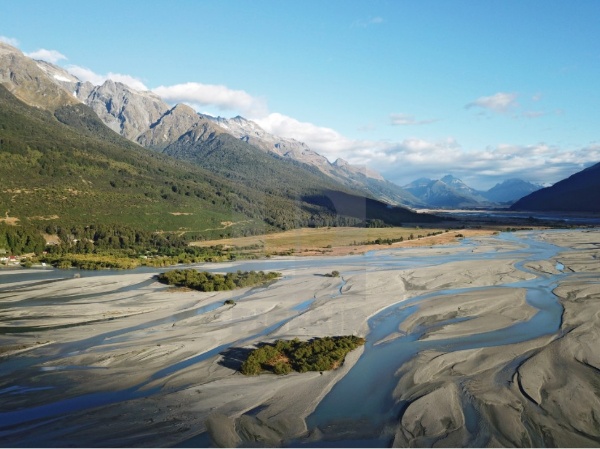
Image Credit : pexels (free license)
A braided river, or braided channel, consists of a network of river channels separated by small, often temporary, islands called braid bars or, in English usage, aits or eyots. Braided streams tend to occur in rivers with high sediment loads and/or coarse grain sizes,
and in rivers with steeper slopes than typical rivers with straight or meandering channel patterns.
They are also associated with rivers with rapid and frequent variation in the amount of water they carry, i.e., with "flashy" rivers,
and with rivers with weak banks. Braided channels are found in a variety of environments all over the world,
including gravelly mountain streams, sand bed rivers, on alluvial fans, on river deltas, and across depositional plains.
Formation:
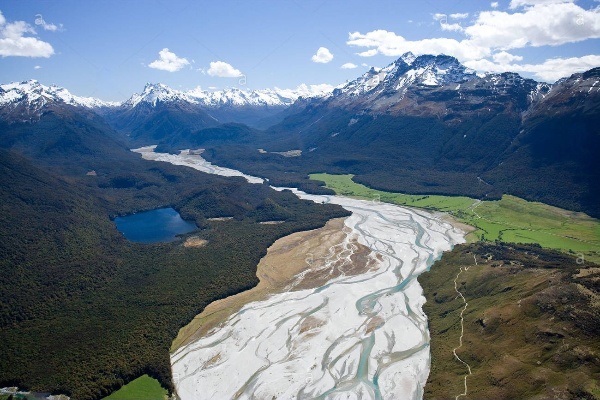
Image Credit : unsplash (free license)
The White River in the U.S. state of Washington transports a large sediment load from the Emmons Glacier of Mount Rainier, a young, rapidly eroding volcano.
Braided rivers, as distinct from meandering rivers, occur when a threshold level of sediment load or slope is reached while a steep gradient is also maintained. On timescales long enough for the river to evolve, a sustained increase in sediment load will increase the bed slope of the river, so these two conditions may be considered synonymous; and, consequently, a variation of slope is equivalent to a variation in sediment load, provided the amount of water carried by the river is unchanged.
A threshold slope was experimentally determined to be 0.016 (ft/ft) for a 0.15 cu ft/s (0.0042 m3/s) stream with poorly sorted coarse sand.[3] Any slope over this threshold created a braided stream, while any slope under the threshold created a meandering stream or - for very low slopes - a straight channel. So the main controlling factor on river development is the amount of sediment that the river carries; once a given system crosses a threshold value for sediment load, it will convert from a meandering system to a braided system.
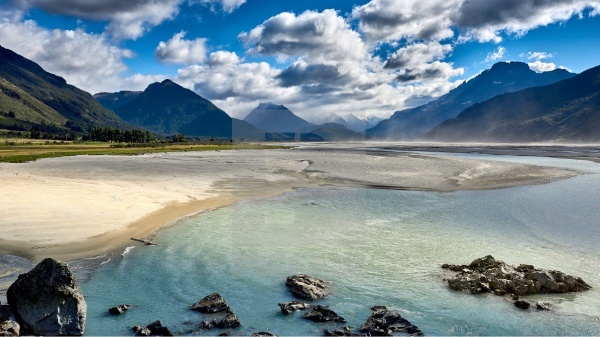
Image Credit : piqsels (free license)
Also important to channel development is the proportion of suspended load sediment to bed load. An increase in suspended sediment allowed for the deposition of fine erosion-resistant material on the inside of a curve, which accentuated the curve and in some instances, caused a river to shift from a braided to a meandering profile.[3] The channels and braid bars are usually highly mobile, with the river layout often changing significantly during flood events.[6]
The braided channels may flow within an area defined by relatively stable banks or may occupy an entire valley floor. The Rakaia River in Canterbury, New Zealand has cut a channel 100 metres wide into the surrounding plains; this river transports sediment to a lagoon located on the river-coast interface.
Conditions associated with braided channel formation include:
an abundant supply of sediment
high stream gradient
rapid and frequent variations in water discharge
erodible banks
a steep channel gradient
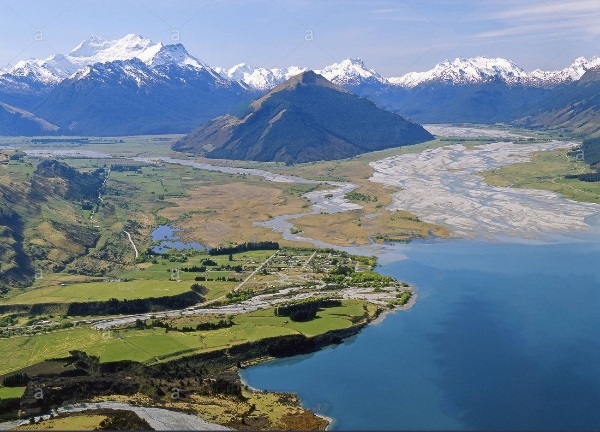
Image Credit : wiki media commons (free license)
However, in terms of the processes that shape the river, the critical factor that determines whether a stream will meander or braid is bank erodibility. A stream with cohesive banks that are resistant to erosion will form narrow, deep, meandering channels, whereas a stream with highly erodible banks will form wide, shallow channels, preventing the helical flow of the water necessary for meandering and resulting in the formation of braided channels.





